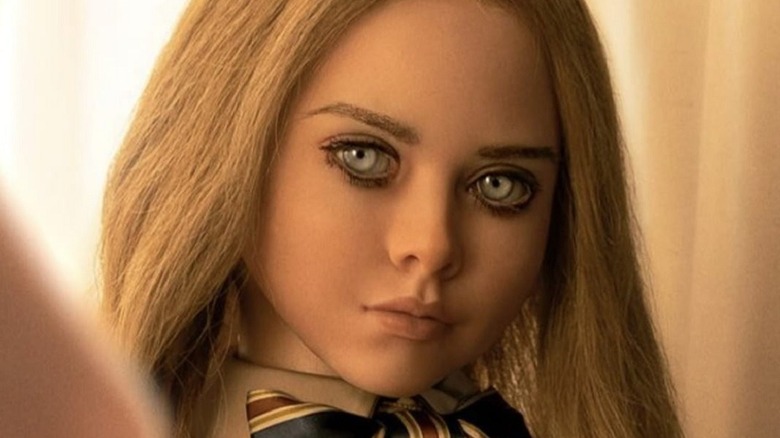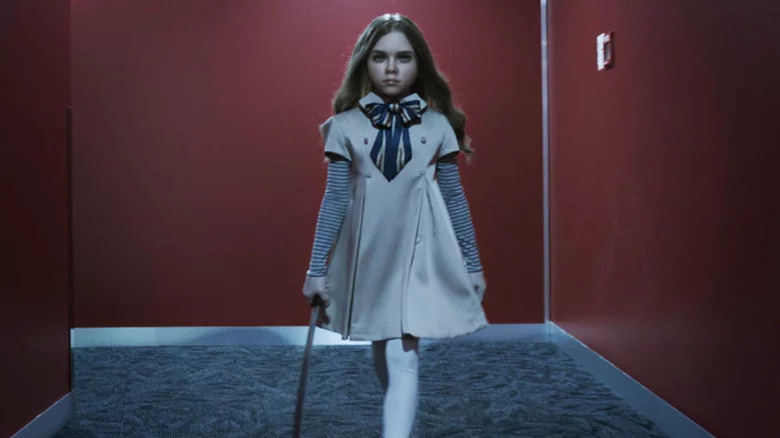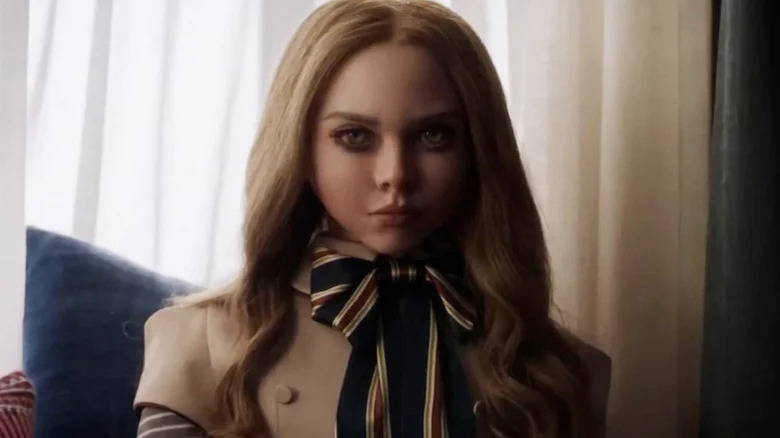M3GAN Is The First Gen Z Horror Icon - What That Means And What Comes Next
Horror genres come, go, and come again. One year, everyone and their 50 rival studios are making zombie horror. The next thing you know, everyone's pivoted to haunted houses or possessions. Auteurs and people with cool, well thought-out takes on the genre appear on such a regular basis that fans almost know to expect them. Meanwhile, remakes and reimaginings of old favorites are constantly clawing their way through the woodwork.
However, there's one thing that's exceedingly rare in horror: iconic villains. There's a reason the industry keeps resurrecting folks like Jason Vorhees and Freddy Krueger -– a horror icon is very, very hard to come by. When you find one, you grab it hard, and hold on forever while doing your level best to dodge its blades and claws.
New horror villains drop all the time, and compelling characters like "Malignant's" Gabriel (Marina Mazepa, voiced by Ray Chase) and "The Babadook's" titular entity (Tim Purcell) show that filmmakers have no shortage of imagination when it comes to creating visually impressive villains. Still, apart from the Babadook's unlikely stint as a meme-worthy LGBTQ+ icon (via The New Yorker), they still have a long way to go before the word "icon" can be used.
"M3GAN," on the other hand, was a different beast since the first trailer dropped. When the film itself turned out to be even more entertaining than the titular doll's dance moves in the promotional material, it was clear that Gen Z has received its first horror icon. Megan the killer friend-bot is sassy, smart, funny, infinitely meme-able, and ... relatable, somehow. What's more, her potential to become a genre mainstay is vast, and everyone involved knows it. Universal was already interested in a "M3GAN" sequel before the movie premiered, and after a successful $30 million debut, the age of "M3GAN" has officially just begun.
So, what does the robot girl's newfound status as a Gen Z horror icon mean, and what will follow? Let's find out.
M3GAN hits the Gen Z sweet spot in a way no other modern horror icon can
While murder clowns and axe killers are just as terrifying to them as they are to any other generation, Gen Z is notably the first true digital native generation that has never known a world without the internet. Thus, your average Gen Zer is likely far more personally familiar with advanced technology than they are with circuses or wood-cutting implements. Right away, that's a point for "M3GAN," whose horror and humor is technology-based, and whose Uncanny Valley features and movements are familiar to anyone who's been subjected to the horrors of sub-par CGI animation. There's also the fact that the creepy Megan doll's very nature as a go-getter who values its loved ones and has an extremely practical (though murderous) approach to problem-solving is quite close to Gen Z's core values, per experts.
"In summary, a typical Gen Zer is a self-driver who deeply cares about others, strives for a diverse community, is highly collaborative and social, values flexibility, relevance, authenticity and non-hierarchical leadership, and, while dismayed about inherited issues like climate change, has a pragmatic attitude about the work that has to be done to address those issues," Roberta Katz of Stanford University describes Gen Z. Sound familiar?
Of course, as Variety notes, a clever, shrewd marketing strategy that went hard at Tiktok and Twitter memeability played a part in giving "M3GAN" its deserved horror queen crown. Going viral has translated to both cultural status and box office love.
So, what comes after M3GAN?
It's almost certain that a torrent of imitators will attempt to recreate "M3GAN's" success with their own takes on memeable, marketable horror that guns for viral attention in hopes of creating horror icons of their own. Unfortunately, it's also pretty likely that things won't be that easy. A horror icon like the Megan robot is lightning in a jar — rare and tough to replicate, even when all the ingredients are clearly visible. Besides, since "M3GAN" will likely occupy the collective " new horror icon" headspace for the immediate future, there's not much room for newcomers.
As such, it may be more interesting to view "M3GAN" as the spearhead of a general horror trend that's been emerging in recent years, and only seems to be growing stronger. Horror has always been at its strongest when it draws from familiar experience, and recent movies have been heavily inspired by experiences that are far more inherently familiar to Gen Z than immortal machete men stalking summer camps can ever hope to be.
"M3GAN" plays with concepts that are inherently familiar to Gen Z, which is what many other recent horror-adjacent greats draw inspiration from, too. "Barbarian" is "Airbnb: The Horror Movie." "X," despite taking place in 1979, can be seen as a musing on content creation gone horribly wrong. "Bodies Bodies Bodies" couldn't exist without online culture; "Deadstream" takes place during a single live stream; "Men" tackles toxic masculinity; and "The Menu" assassinates celebrity chef culture. You get the drill. Even the upcoming, experimental "Skinamarink" explores the kind of universal childhood horror that's likely all too familiar for Gen Z, timeless as it may be.
This isn't a new phenomenon. From "Candyman" to "Get Out," horror has always been excellent at tackling social and cultural affairs. Now that more and more Gen Z filmmakers are hitting their horror stride, the focus has simply shifted to what they know well, shedding the pre-online world of their predecessors in the process. This will no doubt result in countless amazing horror films in the future ... and, somewhere down the line, the next "M3GAN"-style horror icon.


